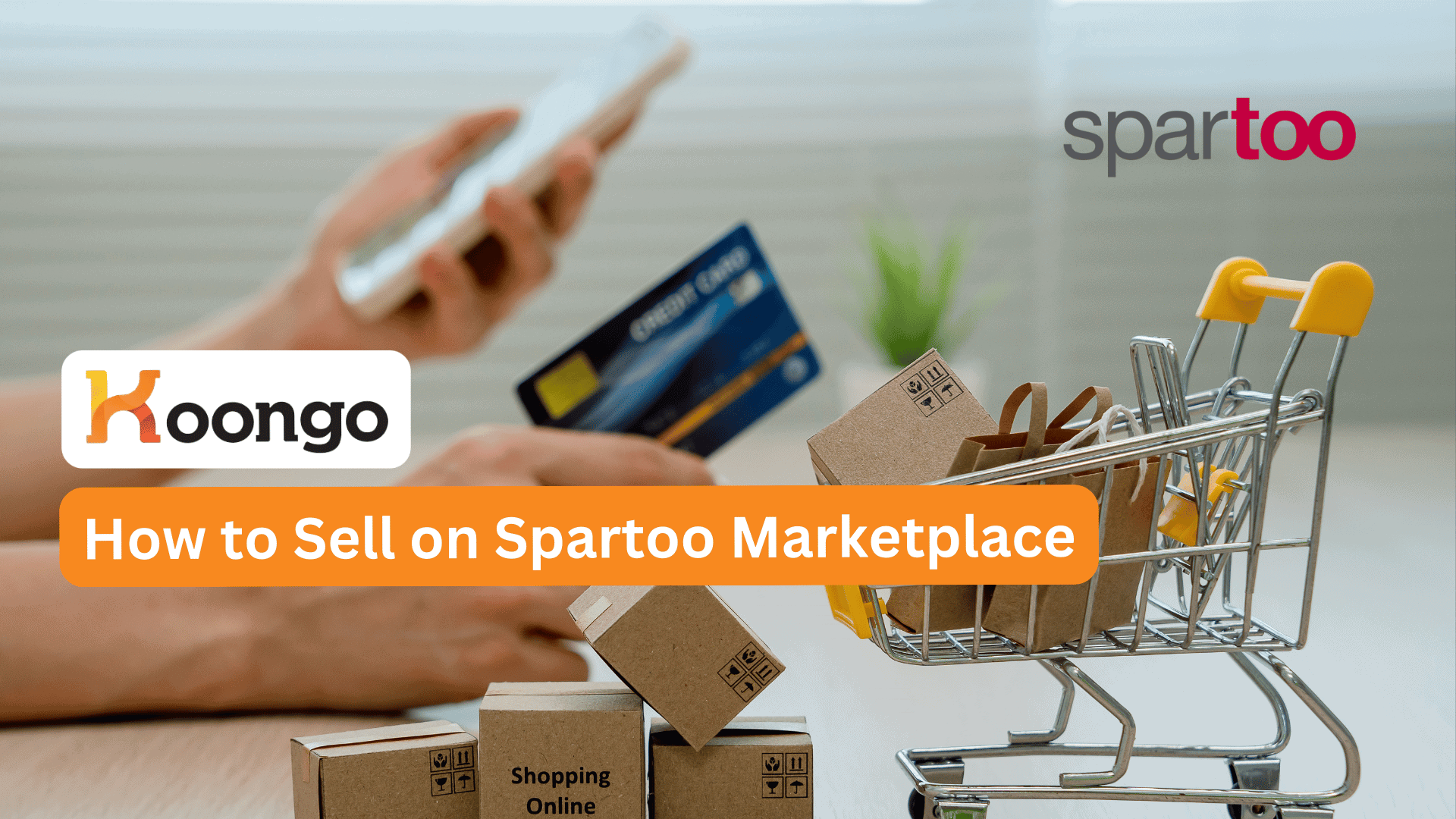In the highly competitive landscape of fashion eCommerce, Spartoo has carved out a powerful niche as one of Europe’s most prominent and specialized marketplaces. Founded in 2006 as a leading online footwear retailer, Spartoo has evolved into a full-featured marketplace platform, welcoming sellers from across Europe and beyond.
Why Sellers Should Pay Attention
With more than 10 million unique monthly visitors and 8 million active customers, Spartoo commands attention not just in France but across 20+ European countries. This makes it a prime international platform for fashion, footwear, beauty, and lifestyle brands seeking access to a loyal and conversion-ready customer base.
- 1.5 million+ products listed
- 10,000+ brands sold on the platform
- 400 employees, including 40 dedicated to e-marketing
- 3 million parcels shipped per year
- Presence in countries like Germany, France, Spain, Italy, Belgium, Austria, and more
Spartoo also differentiates itself by operating its own logistics (TOOPOST), in-house marketing, customer service, and payment processing systems. This makes it not only a high-traffic channel but also one that offers substantial operational support and buyer protection, which enhances conversion rates for sellers.

What is Spartoo Marketplace?
From Retailer to Marketplace Powerhouse
Spartoo began as an eCommerce website focused on shoes but transitioned into a full marketplace model in 2014. Over the years, it has acquired several major fashion eCommerce properties including Rubbersole, Sacby.com, Shoes.fr, and others, while continuing to expand geographically and vertically.
Today, the Spartoo marketplace serves as a powerful distribution and branding platform for over 500 third-party merchants, including both established labels and fast-growing brands.
What Makes Spartoo Unique?
- Fashion-first positioning: Spartoo is not a generalist platform—it’s dedicated to fashion, accessories, beauty, and home decor
- In-house infrastructure:
- Customer service in local languages across all supported countries
- Payment processing and fraud protection
- Delivery and logistics via TOOPOST, a Spartoo-owned logistics company
- Massive reach: With distribution in over 20 EU countries and advanced marketing capabilities, Spartoo offers unmatched cross-border growth opportunities
- Marketing support: SEO, SEM, email marketing, affiliate marketing, and display retargeting are all managed internally to drive traffic to your products
This makes Spartoo a full-service marketplace, not just a listing platform—which is critical in a fashion industry where presentation, service, and trust are major drivers of sales.

Why Sell on Spartoo? Key Advantages
Spartoo offers a rich range of benefits that make it one of the most appealing marketplaces for fashion-focused sellers in Europe.
Access to an Established, High-Intent Audience
Spartoo’s audience consists of highly engaged, purchase-ready fashion consumers. This isn’t a platform for casual browsers—it’s a destination for people who know what they want and are ready to shop.
International Reach
Spartoo gives merchants one dashboard to reach over 20 countries in the EU. The platform handles multi-language customer support, localized marketing, and returns logistics, allowing you to scale cross-border without the usual barriers.
Fashion-Specific Infrastructure
- First marketplace in Europe specialized in fashion and shoes
- Strong visibility in Google Shopping through Spartoo’s marketing campaigns
- SEO-optimized product pages for long-tail product discovery
- Brand-first product display, focusing on quality visuals and curated product categories
Logistics Support: TOOPOST
TOOPOST, Spartoo’s proprietary logistics solution, allows sellers to reduce shipping costs while offering 2–3 day delivery with tracking. This increases consumer confidence and boosts conversions—especially in premium verticals like fashion.
TOOPOST benefits include:
- International delivery network
- Access to 30+ shipping partners
- Discounted shipping rates for marketplace sellers
- Return processing support, including prepaid labels
Customer Service and Trust
Spartoo handles customer service in every supported country and provides fraud protection, meaning that:
- You focus on inventory and fulfillment
- Spartoo manages returns, refunds, and payment collection
- Risk and administrative costs are minimized
Full-Stack Marketing
Spartoo’s in-house marketing team of 40 people works to continuously promote listed products through:
- SEO and SEM campaigns
- Google Shopping integration
- Email marketing
- Affiliate partnerships
- Retargeting and display ads
As a seller, you benefit from increased exposure without additional marketing investment.

What Can You Sell on Spartoo?
Spartoo focuses on high-quality branded products that align with its core market—fashion and lifestyle. Here’s what’s allowed and what you need to keep in mind.
Accepted Product Categories
- Footwear – sneakers, boots, sandals, children’s shoes, designer labels
- Clothing – from basics to premium and boutique lines
- Bags and Accessories – backpacks, handbags, belts, wallets, sunglasses
- Beauty – skincare, makeup, fragrance
- Home Decor – textiles, lighting, small furnishings
Seller Requirements
Spartoo is selective about the products and brands it accepts, focusing on maintaining a high-quality catalog. To be accepted, merchants must adhere to the following standards:
Branded and Original Products Only
Counterfeit or non-branded goods are not allowed. The platform prioritizes products that complement its existing premium catalog.
Competitive Pricing
Your pricing must be competitive within the vertical and adjusted for EU markets. The platform emphasizes price/value parity for products listed across multiple marketplaces.
High-Quality Visuals
All product photos must be on a white or light gray background. Multiple angles are recommended to boost click-through and conversion.
Regular Catalog Updates
Inventory must be synced regularly (daily recommended) to reflect accurate stock. EAN codes are required for each listing to improve visibility and internal categorization.
Timely Shipping and Returns
Orders must be dispatched within 48 hours. Tracking numbers must be provided. Return handling must meet local customer expectations—Spartoo facilitates returns using its own systems.
Customer Service Commitment
Merchants must respond to Spartoo queries or buyer concerns within 24 hours. Though Spartoo manages most customer service, prompt responses ensure better ratings and visibility.

How the Spartoo Marketplace Works
Understanding the flow of operations on Spartoo helps sellers plan correctly and avoid surprises. Below is a practical, end‑to‑end breakdown of how product listing, orders, returns, and payments typically function on Spartoo.
Product Upload & Listing
Sellers feed their catalog into Spartoo using one of several supported methods:
- CSV / XML feed: Standard file formats for batch upload and updates. Many sellers maintain a feed that is periodically refreshed (daily or hourly).
- API / Web Services: For merchants with technical capacity or middleware support, Spartoo supports webservice interfaces to push new products, updates, and inventory changes programmatically.
- Middleware / Integration Platforms (like Koongo): Tools like Koongo act as an intermediary: they transform your store’s product data into Spartoo-compatible feed format, manage synchronization, and submit updates automatically.
Once your feed is accepted and processed, Spartoo lists your products in its catalog. Product visibility is subject to internal Spartoo algorithms (sales, views, stock availability, price competitiveness) and category placement.
Order Processing & Fulfillment
Here is how the order flow usually works on Spartoo:
- Customer places order on Spartoo — The buyer pays through Spartoo’s platform using the payment options (credit card, PayPal, or other available methods).
- Vendor receives an order notification — Your merchant backend (or your connected system via middleware) is alerted to the new order.
- Vendor ships the order — Sellers are expected to dispatch within a strict time window (generally within 48 hours). Tracking details should be provided.
- Customer support and after-sales handled by Spartoo / vendor jointly — Spartoo often handles front-line customer inquiries (especially for returns, complaints), but may forward certain issues to the vendor.
- Payment settlement — Spartoo collects the buyer’s payment and pays you (the seller) on a monthly basis, after deducting applicable commissions, fees, and any returns or adjustment liabilities.
This process ensures that sellers don’t directly manage all customer payment risks or fraud handling—those are partially managed by Spartoo’s infrastructure.
Return Handling & Commission Protection
Returns are a core part of fashion eCommerce, and Spartoo provides mechanisms designed to protect both buyers’ rights and seller interests:
- Return initiation via Spartoo: Buyers request returns through the Spartoo portal, triggering return logistics and tracking.
- No commission lost on returns (in many cases): When a return is validated, the original commission may be reversed (i.e., sellers do not lose commission irreversibly).
- Return logistics handled through Spartoo / TOOPOST: Many returns are managed through Spartoo’s logistics network (TooPost) or via prepaid return labels/local drop points, alleviating the burden on sellers to manage cross-border reverse logistics.
- Vendors must validate returns, inspect the items, and accept or reject them per Spartoo’s policies. Prompt processing is essential to maintain good marketplace standing.
Integration: How to List Your Products on Spartoo
To get your catalog live on Spartoo in a reliable, scalable way, an integration strategy is key. Below are the common methods and important considerations.
Integration Methods
- Manual upload via Spartoo back office
Suited for small catalogs or initial testing phases, but not ideal at scale. - CSV / XML feed
The standard for many marketplace sellers. You prepare a feed with required fields (title, description, images, price, stock, EAN codes, country-specific settings) and upload periodically. - API / Web Service
For high-volume sellers or those who already maintain an ERP/PIM system. Real-time or near-real-time updates of inventory, pricing, and product data; order information is also pushed back via API. - Middleware tools (e.g. Koongo)
These act as translation and synchronization layers between your store (Shopify, Magento, WooCommerce, etc.) and Spartoo. Middleware handles feed formatting, validation, error handling, and scheduled updates.
Catalog Support, Mapping, & Enrichment
- EAN / GTIN Codes
Spartoo favors having valid EAN or GTIN codes for more precise indexing and visibility. While sometimes optional, providing them improves discoverability. (Koongo and other middleware often help you insert or verify these codes.) - Attribute mapping & localization
Product attributes (size, color, material) must be mapped to Spartoo’s taxonomy. For multi-country listings, descriptions and titles need local language variants. - Assisted descriptions/translation
Some sellers may receive help from Spartoo or partners in translating descriptions or enriching metadata. But quality control remains your responsibility.
Synchronizing Inventory with POS / Physical Stores
If you have a physical shop or point-of-sale (POS) system, you can integrate your stock so that inventory is consistent across offline and online channels. This avoids overselling. Middleware like Koongo or custom ERP integrations can bridge this gap, enabling real-time updates from your POS to Spartoo.
Requirements to Start Selling on Spartoo
Before launching, sellers must ensure they comply with Spartoo’s marketplace expectations. Here is what you typically need:
Visual & Content Quality Standards
- Product images must use white or light gray backgrounds without distracting elements.
- Multiple angles and consistent lighting are encouraged to drive conversions.
- Descriptions should clearly detail brand, materials, dimensions, color, care instructions.
Technical & Product Identification
- EAN / GTIN / UPC codes: Each item should have a valid identifier to support indexing, matching, and cross-market consistency.
- Price competitiveness: Listings need to be competitively priced, taking into account shipping, commissions, and return rates.
- Frequent catalog updates: Inventory and price must be updated regularly (ideally daily or more often) to reflect actual availability.
Service & Logistics
- Fast dispatch: Orders generally must be shipped within 48 hours (working days) after purchase confirmation.
- Tracking number: You must provide trackable shipping details so Spartoo and customers can monitor the shipment.
- Customer support: Respond to Spartoo or customer inquiries within 24 hours to maintain good marketplace standing.
- Delivery slip/documentation: Each parcel should include an order slip or delivery note for clarity and returns processing.
- Returns validation: You must inspect and validate returns quickly to preserve buyer satisfaction and comply with policies.
Financial Commitment & Fees
- Subscription or monthly fee: In many cases, Spartoo charges a fixed monthly subscription per country or for access. (Industry sources suggest ~€35–€99 depending on country, category, and account level.)
- Commission: Spartoo commissions typically range between 15% and 20%, depending on whether you are a multibrand seller, monobrand, or in beauty/cosmetics categories. (Sources indicate 20% as a common rate.)
- No setup cost or binding long-term contract: Spartoo generally does not require initial onboarding fees or binding agreements, making entry relatively low-risk.

Logistics & TOOPOST – Spartoo’s Transport Solution
One of Spartoo’s differentiators is its in-house logistics offering, TooPost, designed to optimize logistics for its marketplace merchants and boost delivery performance.
What is TooPost?
- TooPost is Spartoo’s transport management arm, built to reduce transport costs and complexity for merchants.
- It acts as a transport commissioner, leveraging Spartoo’s network of logistics partnerships and local post offices.
- As of recent data, 150+ merchants already use TooPost to handle their logistics, with Spartoo delivering over 4 million parcels annually via TooPost.
- TooPost covers around 15 European destinations, making cross-border logistics smoother for sellers.
Benefits of TooPost for Marketplace Sellers
- Better shipping rates: Because Spartoo negotiates bulk or networked shipping discounts, merchants using TooPost benefit from preferential rates.
- Lower administrative burden: Return handling, label generation, tracking management, and communication are often centralized through Spartoo’s logistics engine.
- Reliability and speed: Spartoo claims that over 98% of parcels handled via TooPost are delivered within their specified timeframe.
- Quality control & tracking: Shipping and delivery oversight are integrated into Spartoo’s systems, enabling consistent tracking and accountability.
- International reach: TooPost’s network enables vendors to ship across the EU using Spartoo’s infrastructure, reducing cross-border friction.
Constraints & Considerations
- TooPost is optional—but highly recommended—especially for sellers seeking reliability and ease.
- In some countries, local or regional courier partners might supplement TooPost’s coverage.
- Merchants must still ensure their internal processes (packing, dispatching, labeling) integrate with TooPost’s expectations and timelines.
- Return fulfillment via TooPost may follow specific Spartoo guidelines, such as return windows, condition inspections, and claim logging.
Best Practices for Selling on Spartoo
Success on Spartoo goes beyond listing your products—it’s about continuous optimization, responsiveness, and aligning with marketplace best practices. Below are proven strategies to push your performance upward.
Start with Top‑Performing SKUs in Fashion Categories
- Begin by selecting your most profitable, fast‑moving, well‑rated items in categories that Spartoo already excels at (shoes, apparel, accessories).
- Use these SKUs as test cases to validate pricing, imagery, shipping times, and return handling. Once results are positive, expand your catalog.
- Avoid launching your lowest-margin or hardest-to-ship items first; early negative experiences (returns, complaints) can hurt your marketplace standing.
Use Koongo to Automate & Validate Product Feeds
- Automate feed generation: Koongo can convert your store catalog into Spartoo‑compatible feed format (CSV/XML), removing manual work and human error.
- Validate before submission: Use validation rules to catch missing attributes (e.g. color, material), invalid EAN codes, image issues, or category mismatches before they go live.
- Schedule feed updates: Ensure that price and stock changes are pushed frequently (e.g. hourly, or multiple times per day) to avoid mismatches or disapprovals.
- Monitor error logs: Use feedback from Koongo’s feed reporting to address recurring issues—e.g. missing images, invalid categories, value mismatches.
Ensure Full EAN / GTIN Coverage & Optimized Images
- EAN / GTIN / UPC codes help Spartoo index and match your products reliably. Missing or invalid codes often lead to reduced visibility.
- Use high-resolution photos, white or light-gray backgrounds, and multiple angles. In fashion verticals, close-ups of details (fabric texture, stitching, zippers) increase buyer confidence.
- Consistent naming of image files and alignment with variant attributes (color, size) helps marketplaces maintain correct listings.
Prioritize Fast & Responsive Support (24h Rule)
- Spartoo expects merchants to respond to queries, returns, or complaint tickets within 24 hours. Delays degrade marketplace reputation.
- Use automation or staff protocols to flag new support tickets and ensure they are addressed quickly.
- When responding, maintain clarity, politeness, and evidence (photos, logistic proof) to reduce escalations.
Monitor Returns & Fix Listing Gaps
- Track the reasons for returns (size mismatch, quality issue, defective, wrong item, damage) by channel / SKU.
- Use that data to improve your listings: correct sizing guides, disclaimers, more precise descriptions, better packaging, or adjust quality control.
- If a particular SKU repeatedly returns, consider pulling it from Spartoo until issues are resolved to protect your seller metrics and avoid delisting.
Use Dynamic Pricing to Stay Competitive
- Spartoo is a competitive fashion marketplace—prices fluctuate. Use rules to adjust your price based on competitor pricing, margin floors, or promotional windows.
- Consider “from‑to” discount pricing or seasonal markdowns for flexibility. But protect your margin: never push to a loss just to win visibility.
- Monitor price elasticity and watch how small price drops or promotions affect volume vs profit.
Monitor Performance by Country & Optimize Inventory
- Because Spartoo covers 20+ EU countries, performance (conversion rate, return rate, shipping cost) will vary by market.
- Use country-specific metrics to adjust which SKUs to promote in which market, where to stock inventory (local vs central), or where to limit marketplace exposure.
- Shift inventory strategically: if a SKU does much better in Italy than Germany, allocate more stock to the fulfillment zones or warehouses supporting Italy listings.
- Use custom labels or internal tags to segment SKUs per region or country for differential promotion or pricing.

How Koongo Helps with Spartoo Integration & Scaling
Koongo was built to simplify multi-channel marketplace management—and integrated Spartoo support is a strong example of that advantage. Here’s how Koongo helps:
Automate Product Feed Creation (CSV / XML)
- Koongo transforms your store catalog into Spartoo’s required feed format automatically, respecting all necessary attributes, taxonomy, and image rules.
- As you update your catalog (new products, deletions, stock changes), Koongo regenerates and versions the feed so your Spartan listings stay current.
Pre‑Built Spartoo Templates in Koongo
- Koongo provides Spartoo-specific mapping templates that know which fields the marketplace demands (e.g. sizes, material, brand, EAN).
- These templates reduce setup time and reduce errors from incorrect mapping or missing attributes.
Schedule Exports: Price, Stock & Promotions
- You can configure scheduled exports (daily, hourly, or custom intervals) so your Spartoo feed always reflects the latest data.
- Promotions (discounts, seasonal campaigns) can be encoded into the feed via attribute rules, ensuring Spartoo sees your correct sale price during windows.
- Price and stock synching is critical in fashion where inventory moves fast—automating this minimizes mismatches.
Central Dashboard for Sync, Errors & Performance
- Koongo’s dashboard shows syncing status, feed health (error rates, warnings), and performance metrics across channels (including Spartoo).
- You can see at a glance which SKUs are failing, which pages were rejected, and correct them quickly rather than discovering problems after they damage visibility.
- Combined channel analytics helps you compare Spartoo performance against other marketplaces in one place.
Scalable Expansion Across EU via Koongo
- If you want to extend your Spartoo reach across several EU countries, Koongo supports multiple country feeds and localization (language, currency, shipping) from the same base setup.
- You can use shared attribute mappings and rules, then layer region-specific overrides where needed.
- Because Koongo handles the heavy lifting, scaling your Spartoo catalog regionally is much less manual, letting you focus on merchandising, marketing, and product strategy.
Spartoo is an excellent marketplace pathway for fashion-focused sellers aiming to scale across Europe with less friction. Its specialization in apparel, shoes, accessories, and beauty categories gives it strong audience fit. Combined with its logistics capabilities (TOOPOST), marketing infrastructure, and return management, Spartoo offers a high-potential channel for well-prepared brands.
Yet, success depends on execution: high-quality content, responsive operations, aggressive optimization, and smart integration. That’s where Koongo shines—making feed setup, error management, localization, and scaling much more manageable.
If you do things right—start lean, validate, expand—you can build a sustainable, high-performance presence on Spartoo that complements your other channels.
Ready to take your fashion catalog to Spartoo and into broader European reach? Here’s how to get started:
- Use Koongo to connect your store and automatically sync your catalog to Spartoo with minimal manual effort.
- Book a free onboarding consultation to map your first listing and ensure compliance.
- Begin with a small batch of top SKUs, monitor how they perform, then scale gradually.
- Localize, optimize, and expand regionally using Koongo’s multi-country support.
- Let your fashion brand shine in Europe—launch on Spartoo now.

 EN
EN 
